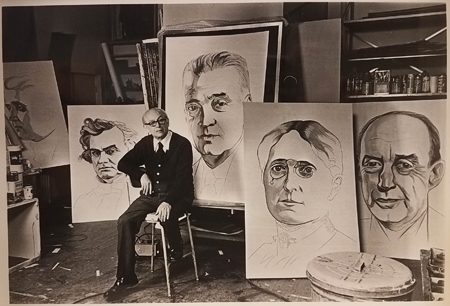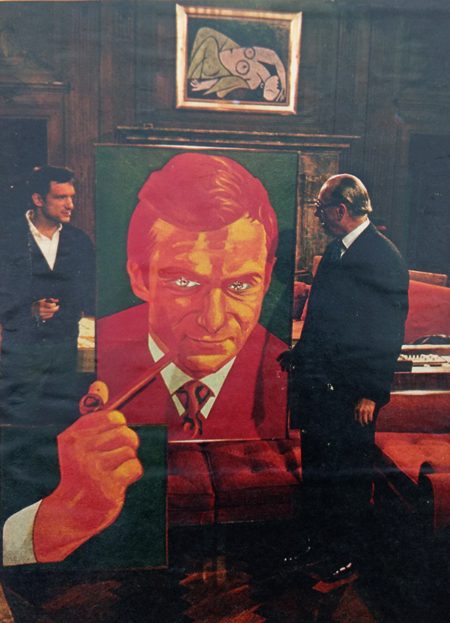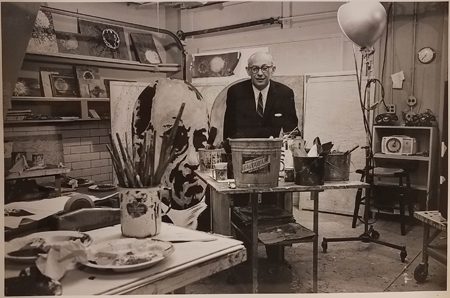CHM archives intern Hannah Radeke worked with senior archivist Dana Lamparello this past summer to cull duplicative images from the photography collection of Edward H. Weiss, a world-renowned, Chicago-based artist and ad man.
Edward Huhner Weiss (1901–84) was a man of many interests. Best known for his large-scale portraits of notable figures both within Chicago and beyond, he also founded an advertising agency, taught college courses, and collected art and historical manuscripts. Working with the Weiss Collection at the Chicago History Museum—which includes over 1,000 photographs of his paintings and artist studio—I found a wealth of photographs featuring Weiss posing with his portraits and their subjects.

Weiss in his studio with some of his artwork, Chicago, c. 1975
An artist since 1940, Weiss was heavily influenced by the work of his father Abraham Weiss, who photographed movie stars for Balaban & Katz movie posters. Edward Weiss’s pieces focused on important figures such as politicians, artists, celebrities, and symphony conductors. In these portraits, he always tried to incorporate a reference to his subject’s personal history or interest, whether it was a mobile in the eye of sculptor Alexander Calder or the face of diplomat Adlai Stevenson on a globe. In his famous portrait of Playboy founder Hugh Hefner, he accentuated the mogul’s eyes and featured his trademark pipe.

Hefner (left) poses with Weiss and his portrait. The hand that holds the pipe is shown as an extension of the main canvas, c. 1960
It was important to Weiss to connect with the subjects of his portraits. In fact, his artist partnerships also carried over to his advertising agency, Edward H. Weiss & Co., where he developed a relationship with the Jim Beam bourbon whiskey brand, one of his clients. During the 1963 holiday season, he designed three unique decanters with his own portraits of Mozart, Beethoven, and Chopin, bridging his art and business ventures and becoming the only living artist to have had his work featured on the bottles.
Weiss’s extensive body of work is a testament to the way he lived: continuously working and imbuing his life with his passions. In his obituary by Kenan Heise of the Chicago Tribune, Heise highlighted Weiss’s belief that “creativity is not merely the capacity to come up with a brilliant new idea now and then, but mainly the ability to work on a steady day-to-day basis as the Renaissance artists did.” Weiss lived up to this definition, extending his creativity to solutions for business and marketing though his advertising agency.

Weiss in his studio, Chicago, c. 1975
Comments